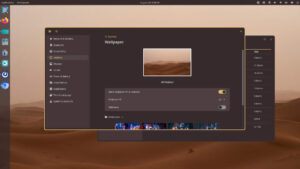For the first time in its three years of existence, AlmaLinux didn’t release its new version within hours of a new RHEL release. That’s because AlmaLinux is no longer just a copy-and-paste RHEL clone.

However, if all goes according to plan, this will be a case of, “meet the new Alma, same as the old Alma” (apologies to The Who). That’s because alongside this new mandate, the distro’s original mandate, to give users an experience that’s indistinguishable from RHEL, regardless of whether the code is copied and pasted from RHEL’s source or comes from other channels, still stands.
This change of approach didn’t come organically to the AlmaLinux folks but came by way of a crises. It was what they saw as the only sensible response to Red Hat’s recent decision to make it difficult for anybody but its customers to access RHEL source code.
“Red Hat has made very clear what they want from us and how they’re willing to work with us,” Vasquez told me in August, shortly after Red Hat quit playing nice with the RHEL clones. “Attempting to subvert them in the way that they want us to work with them is only going to cause, from my perspective, insecurity in my community. I don’t want to try and pick a fight and have the community have to deal with the instability that comes with that. That’s why we ultimately ended up going ABI instead of trying to continue to be one-for-one with RHEL.”
AlmaLinux’s main competitor, Rocky Linux, is still using something akin to the copy and paste method for building its distro, which it can do because Red Hat’s attempt to stop unauthorized access to its code hasn’t been entirely successful. RHEL code hides in plain site in places like public clouds, and once the code is found it can be freely redistributed according to the terms of Linux’s GPL license, which has allowed Rocky Linux to continue to release a bug-for-bug copy of RHEL.
The Time from RHEL to Alma
In a way it’s ironic that AlmaLinux was the distro that chose to find an alternative method for building a RHEL clone that didn’t rely on copying code verbatim, because it was good at building clones the old-fashioned copy-and-paste way.
The distro is the brainchild of Igor Seletskiy, founder and CEO of CloudLinux, a company that at the time of AlmaLinux’s beginning had about a dozen years experience building an eponymous Linux distro that is a hardened and modified version of RHEL, primarily used by hosting companies. CloudLinux was originally based-on CentOS, back when the latter was officially sanctioned by Red Hat as a downstream clone of RHEL. From CloudLinux, AlmaLinux inherited an established process for quickly cloning a distro when it came out with a new release.
From the time it was launched in 2021, AlmaLinux has consistently released new versions on the same day of a new RHEL release, and has been the only RHEL clone to do so. When RHEL 9.2 was released on May 10, for example, AlmaLinux announced the release of their corresponding version within hours. It took six days for Rocky Linux to release its version 9.2.
With Alma’s new development methods, however, it appears that same-day turnarounds are now likely to be a thing of the past. In the case of today’s release, RHEL 9.3 went GA on Tuesday, meaning that AlmaLinux 9.3 is being released a full six days later, although we can drop the lag down to three days, since AlmaLinux 9.3 was good to go for a release on Friday.
“We just don’t want to release on a Friday,” Vasquez said with a shrug in a conversation I had with her on Friday. “I’m feeling pretty good about that as the turnaround, considering the manual effort that this one took. At least for now, that’s gonna be a pretty consistent amount of time when we’re building a full release, but there are some ideas about how to improve on that time that we might see for 9.4. We’ll see.”
ABI Compatibility
Under the new self-imposed rules that keeps Alma devs largely away from Red Hat’s actual source code, AlmaLinux is built using source code from CentOS Stream, while paying close attention to what features make it into RHEL, as well as to any changes made to the software’s functions once in RHEL.
There was an easier alternative. Alma could’ve grabbed the low hanging fruit and taken advantage of the RHEL code that OpenELA recently made available. OpenELA, or Open Enterprise Linux Association, is an association recently formed by Oracle, SUSE, and Rocky Linux’s owner CIQ, that mines RHEL source code and makes it publicly available (“No subscriptions. No passwords. No barriers. Freeloaders welcome.”) online.
According to Vasquez, turning to code made available by Rocky and its partners hasn’t been necessary.
“We haven’t needed to go to them for any of the updates at this point,” she said. “If there’s a change in what Red Hat’s doing in the future, we might change how we’re doing things. But right now, there’s no reason for us to go to OpenELA.”
Although Alma hasn’t said so, perhaps the biggest reason for taking a pass on OpenELA’s code is to remain on good terms with Red Hat… or at least to avoid being on bad terms with them, which would also mean being on bad terms with IBM.
There are other reasons that don’t directly involve Red Hat.
For example, this new approach to building the distro opens the door for AlmaLinux to eventually become something more than merely the free version of another company’s operating system. Since announcing several months back that it was putting its code-snipping scissors away (or at least using them less often), the distro has hinted that down the road it might be adding features that are not found in RHEL.
Also, finding a way to duplicate RHEL without having to depend on Red Hat as a source might in the long run be more sustainable.
“One of the things we continue to see from our users is they like that the approach we’re taking lends itself to longevity and stability,” Vasquez said. “We’re not going to have to shift every two years because something crazy changed. We’re focused on something that will be the long term solution. This is one of the things that I’ve really had to hammer home with folks, especially from outside the organization.”
The distro is also seeing itself become the upstream to other Linux distros. CloudLinux, of course, has been based-on AlmaLinux since shortly after the latter’s first release. More recently, Japan-based Miracle Linux, a security-hardened fintech-focused distro developed by CyberTrust Japan got on board the AlmaLinux train by adopting Alma as its base and has become a top-tier member of the AlmaLinux Foundation.
“The decisions we’re making right now are have rippling impacts, because I now know of at least three operating systems that are based on AlmaLinux,” Vasquez said. “They’re using AlmaLinux as their base, which means that every time we cause a disruption of any kind we’re causing instability for not just our Linux users, but for all of the users of those operating systems that are based on us. So for me, it’s really important that every decision we make is focused on stability and longevity.”
If you want to take AlmaLinux 9.3 for a test drive, it supports a number of architectures (x86_64, aarch64, ppc64le, and s390x), all of which can be downloaded from the AlmaLinux website.
Christine Hall has been a journalist since 1971. In 2001, she began writing a weekly consumer computer column and started covering Linux and FOSS in 2002 after making the switch to GNU/Linux. Follow her on Twitter: @BrideOfLinux









AlmaLinux is taking an interesting path. 🙂
The remaining question to me is: how will AlmaLinux cope with the source RPM unavailability for CentOS Stream after the 5 years of Stream support.